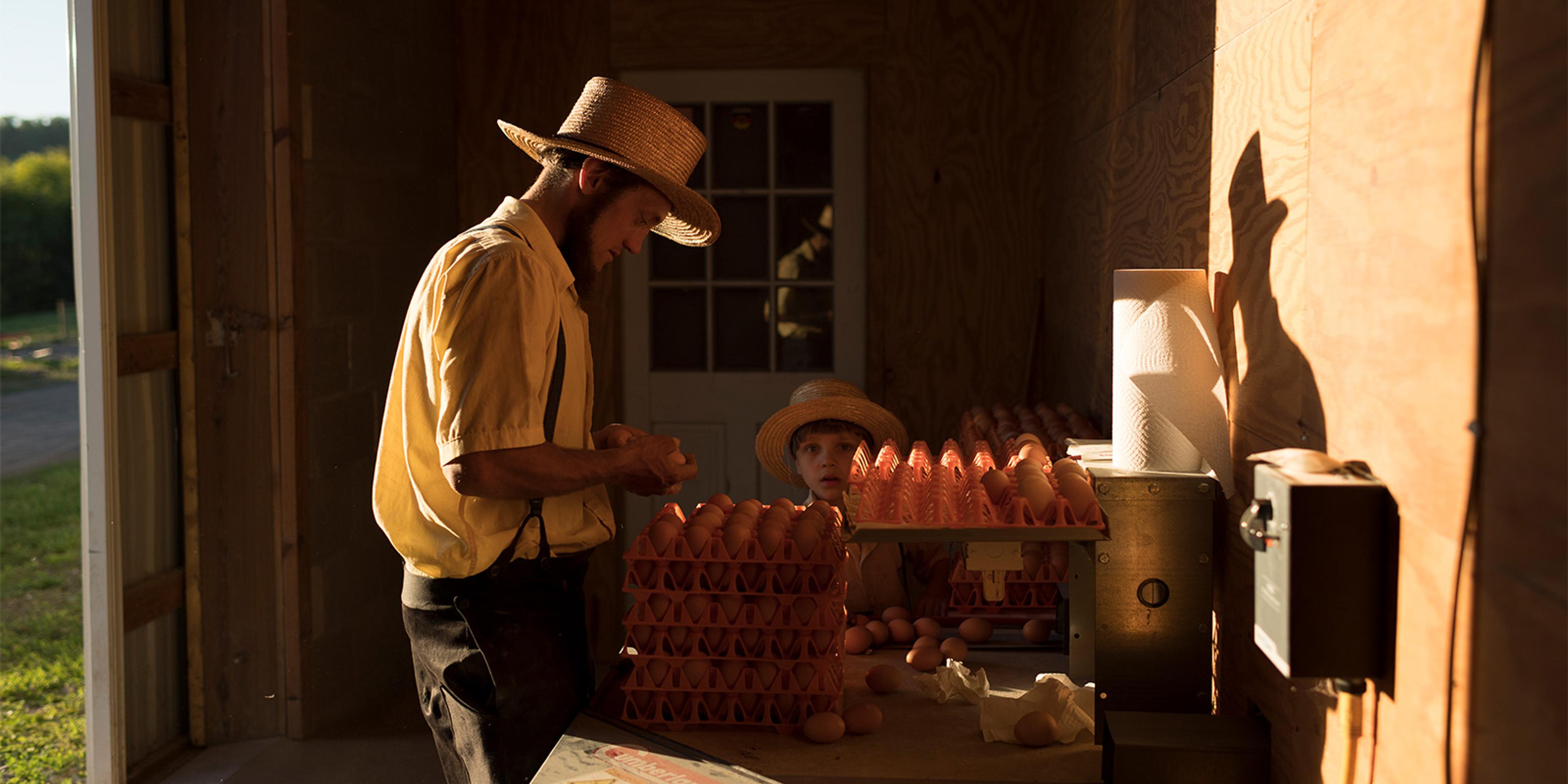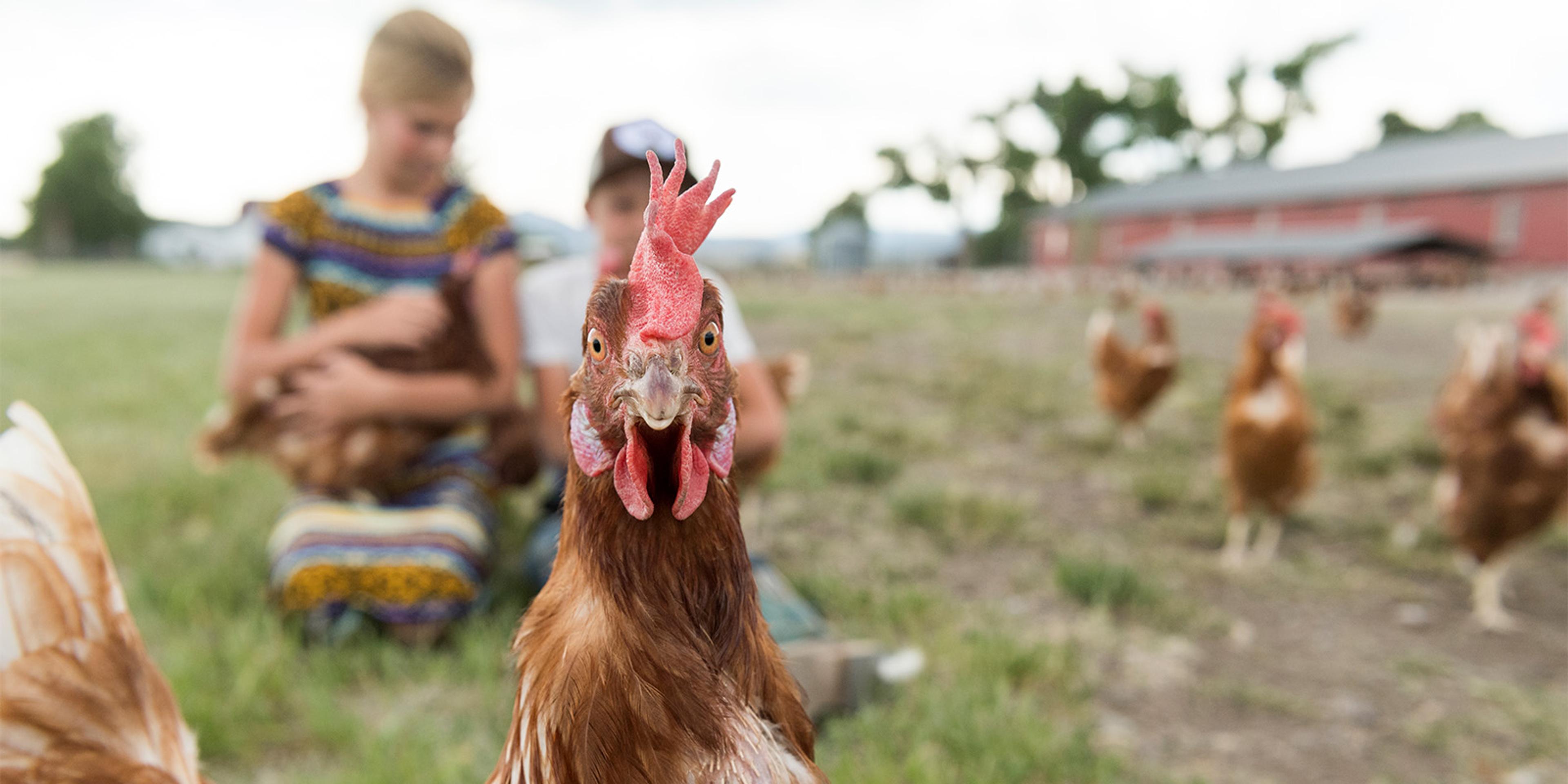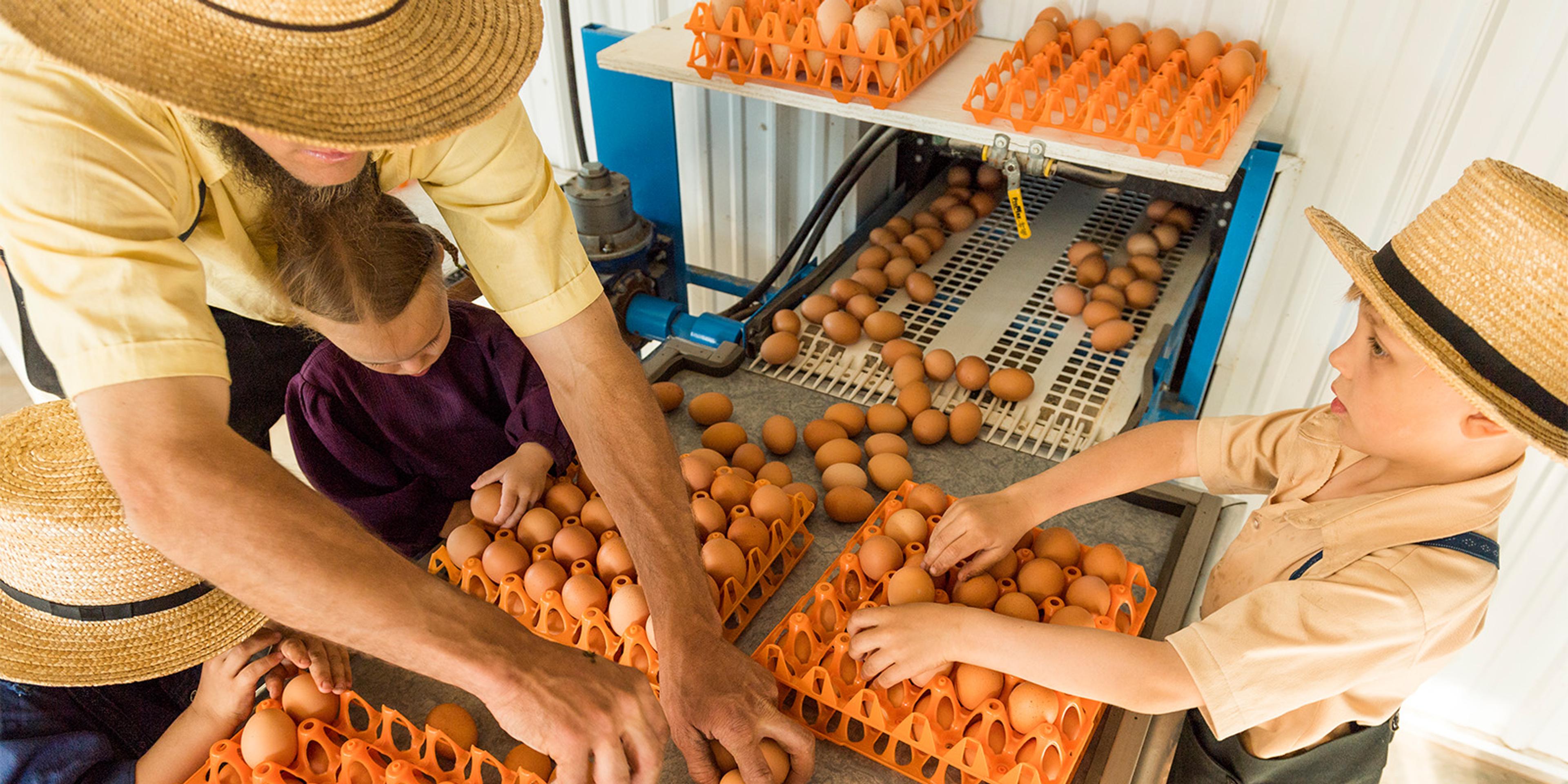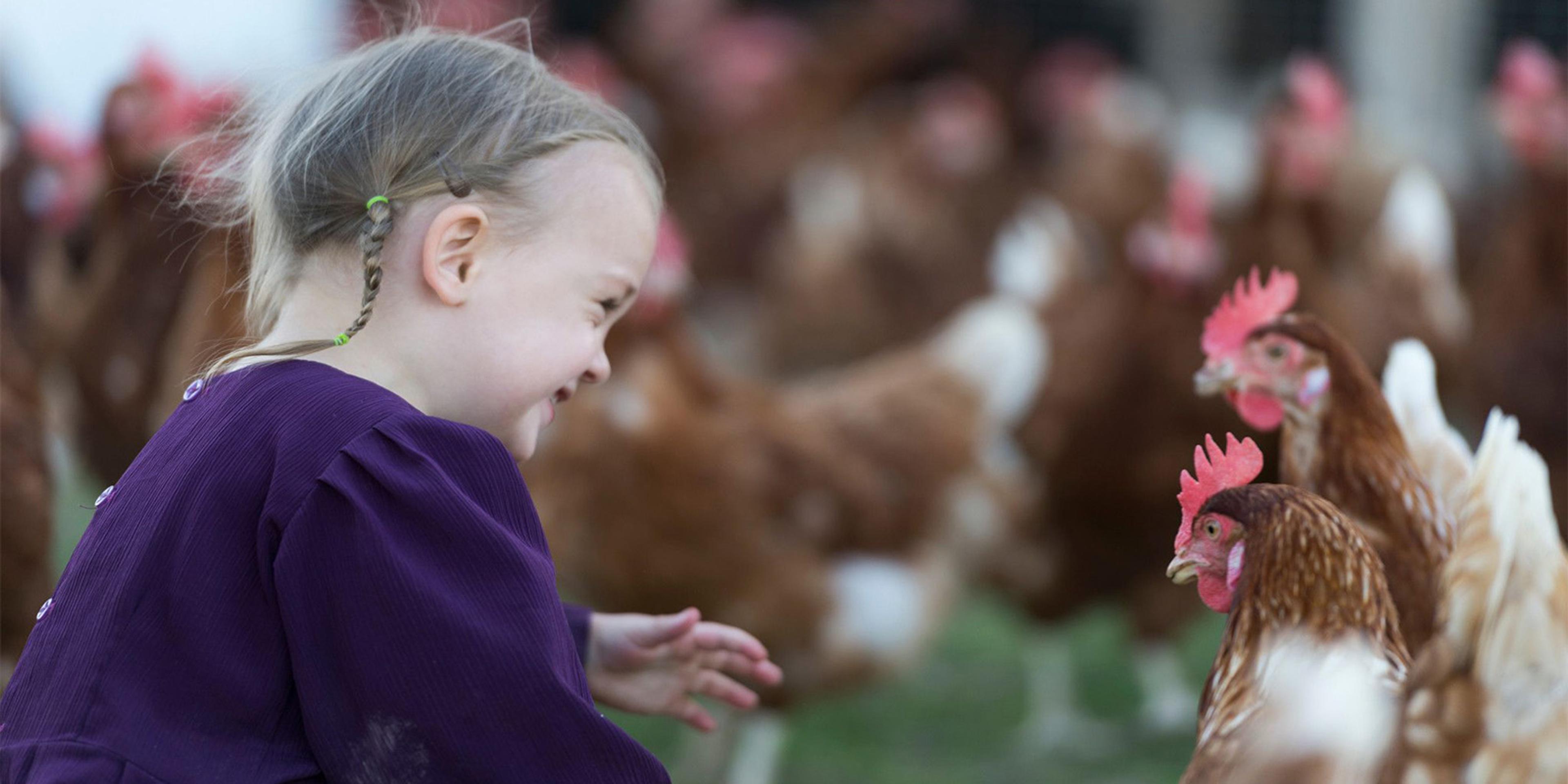
Farming
From Coop to Kitchen: How an Egg Gets From the Farm to Your Fridge
Organic Valley farmers Martha and Isaac Glick have six children, ages 2 to 12. The Pennsylvania family works together tending chickens and handling thousands of eggs — taking care not to break them as they prep the eggs for market.
Even with several quality checks along the way, it doesn’t take long for the eggs to make it to store shelves. Miraculously, not many are busted on the way.
With 4,800 laying hens, the Glick farm is a small organic egg producer compared to industrial farms that sometimes house millions of hens.
Though eager to collect and put eggs in crates, the youngest children need to wait a few years to partake in egg farming to ensure the majority of the eggs remain intact. The older children jump in to help before they head to school.
The family collects about 350 dozen eggs a day and usually three to 10 eggs break. But there are victorious days with zero broken eggs!
How are these precious eggs handled so that they flawlessly make their way from the farm to your fridge? Let’s follow their journey.

Chickens enjoy grain at an Organic Valley farm.
Cock-A-Doodle-Doo – Time to Wake Up
The automatic barn lights come on at 4 a.m., waking the hens at the Glick family’s organic farm. After a 4:30 a.m. breakfast of grain, most of the hens start getting restless and begin heading off to lay eggs. The family collects 80% of the day’s eggs by 9 a.m.

A sassy-looking hen at the Toews family farm in Colorado.
The Hen Spends Her Day Doing What She Wants
While the egg farmers take care of chores, the chickens are Free to Forage™. They roam, scratch around outside, eat bugs and be themselves. They have access to grass, gravel, dusty areas and shaded areas (weather dependent). The barn contains hay, straw and scratch areas for times the chickens are inside.
The Glicks feed their chickens six times per day — that’s 8,000 pounds of feed a week that Isaac blends and gives to the chickens. Yes, 8,000 pounds! (A nutritionist helped design the perfect mix of corn, minerals and soybean meal for the Glick's chickens.)

Organic eggs are placed in crates by hand at the Glick family farm.
The Egg’s Journey Outside the Nesting Box
Once the chicken lays an egg, depending on the coop’s setup, it rolls down from a sloped nesting box (an enclosure for chickens to feel secure while laying an egg). Once gravity takes over, the eggs roll onto a conveyor belt that moves the eggs to the “egg room” or “gathering room.”
Farmer Collects, Inspects and Crates Eggs
Here the Glick family touches every single egg, visually inspecting them for imperfections and putting the best eggs onto crates. The Glicks usually collect the U.S. Department of Agriculture Certified Organic eggs three times a day, and putting on the crates (or flats) takes about two hours a day. After making sure only quality eggs are in the crates, the eggs are put in a cooler. Eggs that are not up to standard are set aside and will not be sold.
Eggs from Organic Valley farms are sent to Organic Valley monthly for in-house testing. Here, our quality assurance team inspects every egg in the sample. The egg’s weight, shell strength, egg freshness, yolk color and more are evaluated on a digital egg tester.

Organic Valley egg truck driver Craig Nemec picks up a load of eggs from a Wisconsin farm.
Time for the Eggs to Hit the Road
Once a week, a truck comes to the farm to pick up the eggs. The driver uses a pallet jack to pick up and carefully set the eggs down in the back of the box truck.
Eggs Arrive at Processing Facility
The truck driver delivers the eggs to an egg-processing facility. Here the eggs are washed, “candled” and sorted. Candling is when a bright light is put behind an egg to detect imperfections like deformities or cracks. Those eggs are eliminated.
Check out how the eggs are processed in this mesmerizing video:
Eggs Are Packaged
The eggs that make the grade are put on a conveyor that moves the eggs to their respective lanes designated for medium, large or extra-large organic eggs. A machine separates the eggs and places them in cartons.

Employees box cartons of Organic Valley eggs at the processing plant.
Cartons Packed and Off to the Store
Workers put the now-full egg cartons into boxes and place them on pallets. A truck picks the freshly packaged eggs up and takes them to a store or one of Organic Valley’s distribution centers.
The End of the Egg Journey
Next is the exciting part: You, the consumer, arrive at the store to grab a dozen organic eggs to take home and share with your family.
“They are healthier,” Isaac said of Organic Valley eggs. “If you are going to buy an egg — these eggs are what the carton says they are.”
Martha and Isaac’s family of eight eats dozens of eggs per day. Some days eggs will be part of every meal — and why not, since eggs are one of the most nutrient-dense foods on the planet. Their favorite way to serve them is over light (over easy), but they also favor egg salad and hard-boiled eggs. Egg bakes also make a wholesome meal.
Like the Glicks, you can feel confident eating organic free-range and pasture-raised eggs as they contain no antibiotics, synthetic hormones, toxic pesticides or GMO anything and your purchase of Organic Valley products also provides small family farms a stable pay price.

Play time at the Glick farm in Pennsylvania.
As you are cooking delicious organic eggs, what is that hen up to? Maybe she’s out on pasture picking away at bugs and bathing in dust — living her best life until she’s ready to lay another egg … and the egg journey begins anew.
* While Organic Valley hens are Free to Forage outdoors, farmers take proactive steps to protect their flocks, including increasing biosecurity and keeping hens inside when the situation calls for it. Keeping hens indoors is the exception in the case of a high-risk situation where the health and safety of a flock is compromised by outside variables such as the bird flu or other outbreaks.
How long do eggs last? When refrigerated at 35 to 40 F, the shelf life of eggs is 24 to 42 days. Egg carton dates are regulated at the state level, and the mandated maximum code date will vary from state to state.
An antique typewriter fanatic and chicken mom who treasures time outdoors admiring all that nature has to offer, Jennifer McBride is Rootstock’s editor. McBride spent 15-plus years as a journalist and newspaper editor before finding her niche with the nation’s leading organic dairy cooperative. Contact her at Rootstock@organicvalley.com.
Related Articles
- Tags:
- animal care,
- farm life,
- high quality products


















